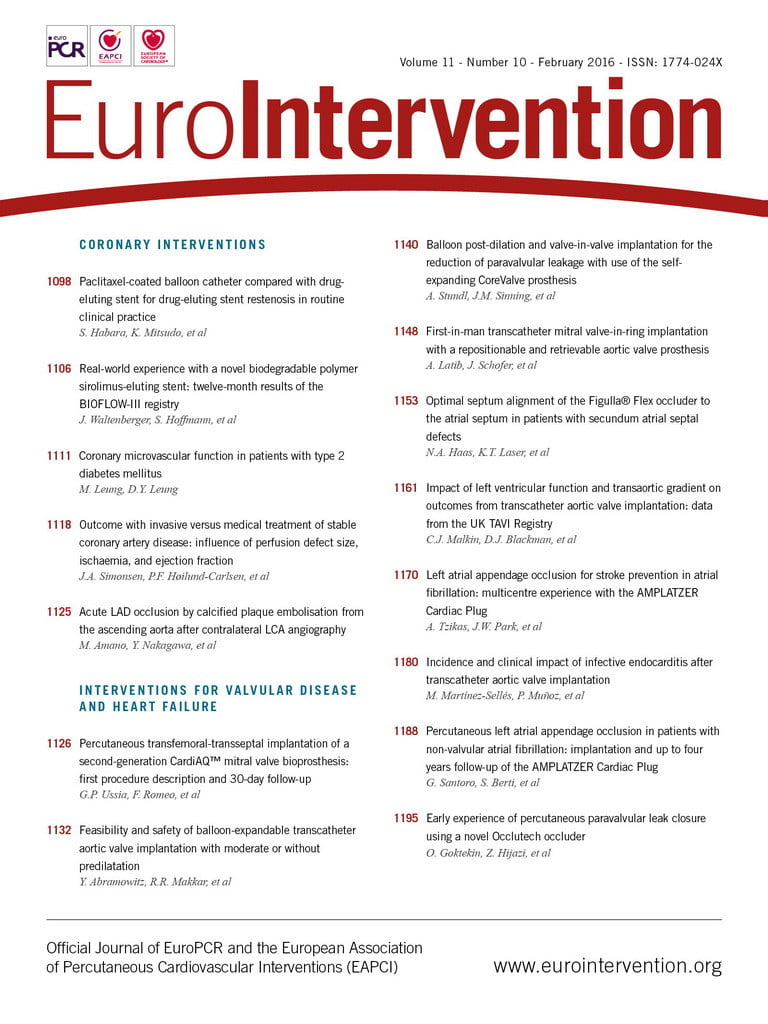
From the earliest reports of paravalvular leak closure in 19921, the concepts as well as the clinical need for this procedure have continued to gain interest and momentum. More than 370 patients in various series have been reported to have had a procedure performed to close a paravalvular leak2-10. Meta-analyses have noted technical success on average in about 87% of cases and procedural success, usually achieving significant reduction to mild or less residual shunt, in about 75% of cases. Some series have reported up to three procedures on patients to achieve a therapeutic result. Some have suggested improved results using an apical approach, as suggested in the report by Goktekin et al in this issue of the Journal11. Some have had significant complications, as in the two cases reported with haemo/pneumothorax. With longer-term observation, many authors have expressed concerns over high late mortality rates in the group as a whole, often because of their age and multiple comorbidities. Persistent shunts in particular have been reported, as well as late recurrent or the appearance of new shunts possibly related to continuing or provoked valve dehiscence, persistent debilitating haemolysis, late prosthesis valve dysfunction and persistent heart failure. It has been observed that the available devices, particularly in the USA, are not ideal for the crescentic defects encountered, often requiring up to four devices to be deployed in a single defect. Procedural success has been limited by inability to cross defects with adequate delivery catheters, device embolisation, and mechanical valve interference by the device. Some years ago, one review posed the question “Are we there yet?”6. It has often seemed that real success is a long way off.
More recent reports from the USA have utilised the AMPLATZER™ Vascular Plug II (St. Jude Medical, St. Paul, MN, USA)9. This device offers some intrinsic advantages with its soft wire design and double disc configuration. Despite the defect’s crescent shape, the body of this device appears to flatten within the cavity of the defect to achieve better occlusion. Currently, a limited number of studies have reported the use of the AMPLATZER™ Vascular Plug III with some success, but have also noted similar problems and similar results with a device more specifically designed for crescentic defects10. The report by Goktekin et al now presents a paravalvular leak series using a new device specifically designed to occlude crescentic paravalvular defects. With some reservations, this report stands out as having remarkable results. They report 21 consecutive patients with 100% technical success and 100% procedural success. Twelve patients had a 12-month follow-up with no adverse events and only one reintervention. Some did require multiple devices for closure. Perhaps a better device design? Two shapes available with two waist configurations may provide better options for defect coverage? The delivery systems and methods are as previously described but with a surgical minithoracotomy apical approach. Is it an ideal system for suggesting a randomised trial for surgical comparison of the results? Despite the minithoracotomy, they report patients dismissed from hospital in two to three days.
Clearly, there were some deficiencies, as noted by the authors. Their patients were generally younger (mean age 52 years), most were in NYHA Class II, none was described as having haemolysis either before or after device closure, and the follow-up period was shorter than in other studies which have reported later deterioration and death. There is no doubt that additional studies with larger series of patients with more typical patient comorbidities and at least two-year follow-up would be necessary. One would expect that the technical and procedural success will be less than 100%. However, with the experience and delivery systems already in place, and recognising the need for careful 3D and 4D TEE guidance in conjunction with fluoroscopic navigation systems, one would still expect a very high degree of success.
Nonetheless, while some manufacturers have refused to offer randomised worldwide studies to provide sufficient data for scientific assessment of success, this device may offer more hope for such an opportunity. Hopefully, this initial report may provide the confidence that the manufacturer could proceed with a careful, well organised worldwide study to achieve CE and FDA approval. Perhaps it is time to move away from individual efforts for success to a systematic repeatable method, as observed with the percutaneous valve trials. One can only hope that this will stimulate the manufacturer to move ahead.
Conflict of interest statement
The author has no conflicts of interest to declare.

